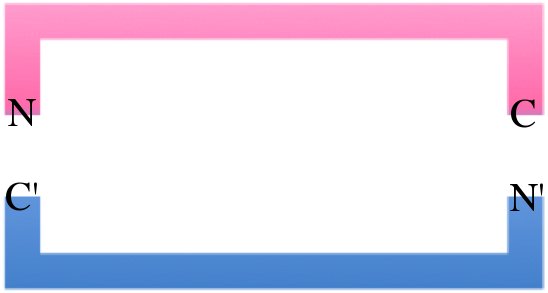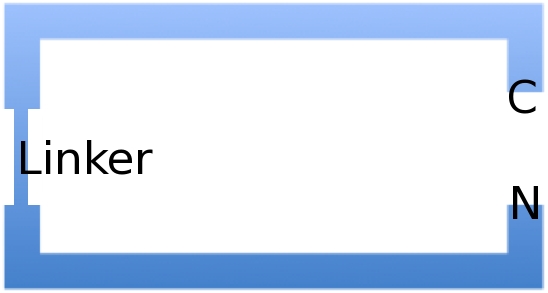Team:Washington/Gram Positive/Design
From 2010.igem.org
We have two main goals when redesigning CapD. First we want to make it easier to express and more stable. Second we want to improve the hydrolytic activity of CapD to better cleave Poly-D-γ-glutamate, making it a more potent Anthrax treatment.
Naturally produced CapD auto-cleaves itself to create a dimmer. The new N terminus contains a critical catalytic threonine residue which allows the enzyme to cut Poly-D-γ-glutamate.
To increase stability and expression, we created a circular permutation of CapD. Typically we view the primary structure of proteins as linear, but when the N and C termini are close together after folding, the protein can be though of as a circle with a small gap. Frequently it is possible move the gap by creating a linker between the naturally occurring N and C termini and then changing the starting and ending residues. This works so long as the amino acid sequence remains the same relative to itself (neighboring amino acids still have the same neighbors). For CapD we made the sight that normally auto-cleaves the N terminus, and added a FoldIt designed linker between natural CapD N and C terminus. This circular permeated CapD, aka CapD_CP, is a monomer which give it greater stability and ease of purification.
Since the first residue of any nascent protein must be Methionine, we rely on E. Coli’s naturally occurring Methionine aminopeptidase to remove the first Methionine, making CapD_CP catalytically active. The removal of the first methionine has been verified via mass spectrometry.
To increase the hydrolytic ability of CapD_CP we made point mutations in the active sight. We focused our attention on two types of mutations. First we created point mutations that made hydrogen bonds to a modeled transition state of our substrate in an attempt to stabilize the transition state. Second we mutated the active sight to be more open and polar in an attempt to increase the ease with witch water could enter and participate in a hydrolysis reaction.
To make these point mutations we used a program called FoldIt to predict how changes in protein structure and composition will affect protein stability. FoldIt provides the user a 3D representation of the crystal structure of a protein that can then be manipulated. Manipulation functions include point mutations, insertions, deletions, repacking of side chains, and backbone movement, which FoldIt then assesses for stability. This allows the user to quickly interact with a protein and easily predict how mutations will effect a protein.
 "
"


